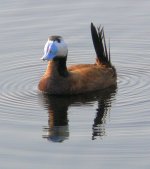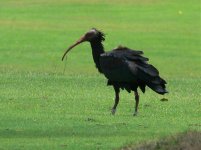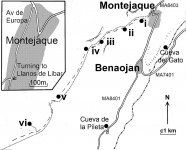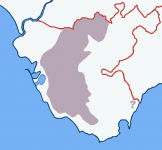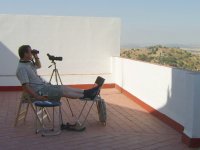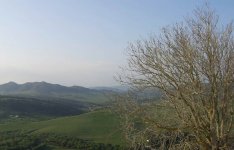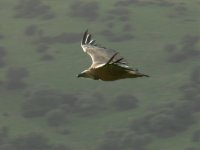John Cantelo
Well-known member
I've decided to start a new thead on birds & birding in Cadiz province. My recent posting on this topic had a marginally misleading title since it introduced my new webpage/blog (see below). The new heading is less misleading! Hopefully, I pln to update folks on my regular visits to the area and any relevant info on the area. As always more info can be found in my blog/website and above all my detailed notes. Hope this proves useful!
Known Unknowns
Remember Donald Rumsfield’s famous comment “There are known knowns; there are things we know we know. We also know there are known unknowns; that is to say we know there are some things we do not know. But there are also unknown unknowns – the ones we don't know we don't know”?
It caused some merriment at the time, but I’ve always felt this somewhat misplaced. OK, the prose is a bit tortured and strained, but in its essentials the phrase seems to me to distil something quite profound. It’s close to the spirit that has informed my exploration of Cadiz province.
The known knowns are places like the Bonanza Salinas – a site well covered in the guidebooks and thus a honey-pot for visiting birders. I know it’s always worth a good look and it regularly supports a good variety of waders, gulls, BoPs, etc.
Then there are those ‘known unknowns’ - it’s now widely understood that Long-legged Buzzard is now a regular visitor to the area. However, exactly how widespread and frequent it actually is remains somewhat obscure. With few observers, but widely scattered records is it actually less rare than supposed? I certainly make sure I check any passing Buzzards carefully!
Then there are the ‘unknown unknowns.’ I’ve stumbled across enough good sites to know that there must still be some little gems out there of which nobody’s aware. Take ‘Wood’s Pools’ for example. Where you ask? Well a few years ago a birding friend of mine, Stephen Wood, stayed in my house in Alcala. Naturally he, with his birding wife and another birding friend, decided to explore the Sanlucar/Bonanza area. In so doing, they told me, they took a wrong turn and came across a pool which played host to White-headed Duck. Unfortunately, directions were vague and, putting 2+2 together to make 5, I convinced myself that they’d somehow blundered round the back of Laguna de Tarelo. Steve, however, insisted it was somewhere else entirely so I called up the appropriate image from GoogleEarth and took a good look. It didn’t take long to find a couple of small pools just off the beaten track – less than 5 minutes from the main road. A quick click on the images of the place on GoogleEarth showed good shot of Little Bittern!
So next time I was out in Spain I investigated and (re)discovered the pools - a couple of small, flooded clay pits surrounded by a wasteland of ‘plasticos’. What the site lacked in size it gained in easily observed birdlife. There were 5-6 White-headed Duck at grippingly close range, numerous Great Reed Warblers shouted from the reeds, the odd (very odd!) Purple Swamphen clambered about and it proved to be just about the easiest place I’ve found to see Little Bittern. With the White-headed Ducks now proving elusive at nearby Laguna de Tarelo, this is now my essential quick stop in the area for this species. I'vyet to find anywhere where they can be so easily observed and at such close range. To Steve’s chagrin, though, I call ‘em ‘Bonanza Pools’ which makes better geographical sense. Not a place to spend the day, but a terrific quick stop.
So where does this leave those ‘unknown unknowns’? Well, even after six years, every time I’m out in Cadiz Province I find somewhere new and interesting. Have I found them all? Certainly not! So next time you venture out to the area - or elsewhere - don’t be scared to venture ‘off piste’ – go out and try to find sites that still elude me .... and everyone else!
For more details of this site see the web address below,
Good birding,
John
Known Unknowns
Remember Donald Rumsfield’s famous comment “There are known knowns; there are things we know we know. We also know there are known unknowns; that is to say we know there are some things we do not know. But there are also unknown unknowns – the ones we don't know we don't know”?
It caused some merriment at the time, but I’ve always felt this somewhat misplaced. OK, the prose is a bit tortured and strained, but in its essentials the phrase seems to me to distil something quite profound. It’s close to the spirit that has informed my exploration of Cadiz province.
The known knowns are places like the Bonanza Salinas – a site well covered in the guidebooks and thus a honey-pot for visiting birders. I know it’s always worth a good look and it regularly supports a good variety of waders, gulls, BoPs, etc.
Then there are those ‘known unknowns’ - it’s now widely understood that Long-legged Buzzard is now a regular visitor to the area. However, exactly how widespread and frequent it actually is remains somewhat obscure. With few observers, but widely scattered records is it actually less rare than supposed? I certainly make sure I check any passing Buzzards carefully!
Then there are the ‘unknown unknowns.’ I’ve stumbled across enough good sites to know that there must still be some little gems out there of which nobody’s aware. Take ‘Wood’s Pools’ for example. Where you ask? Well a few years ago a birding friend of mine, Stephen Wood, stayed in my house in Alcala. Naturally he, with his birding wife and another birding friend, decided to explore the Sanlucar/Bonanza area. In so doing, they told me, they took a wrong turn and came across a pool which played host to White-headed Duck. Unfortunately, directions were vague and, putting 2+2 together to make 5, I convinced myself that they’d somehow blundered round the back of Laguna de Tarelo. Steve, however, insisted it was somewhere else entirely so I called up the appropriate image from GoogleEarth and took a good look. It didn’t take long to find a couple of small pools just off the beaten track – less than 5 minutes from the main road. A quick click on the images of the place on GoogleEarth showed good shot of Little Bittern!
So next time I was out in Spain I investigated and (re)discovered the pools - a couple of small, flooded clay pits surrounded by a wasteland of ‘plasticos’. What the site lacked in size it gained in easily observed birdlife. There were 5-6 White-headed Duck at grippingly close range, numerous Great Reed Warblers shouted from the reeds, the odd (very odd!) Purple Swamphen clambered about and it proved to be just about the easiest place I’ve found to see Little Bittern. With the White-headed Ducks now proving elusive at nearby Laguna de Tarelo, this is now my essential quick stop in the area for this species. I'vyet to find anywhere where they can be so easily observed and at such close range. To Steve’s chagrin, though, I call ‘em ‘Bonanza Pools’ which makes better geographical sense. Not a place to spend the day, but a terrific quick stop.
So where does this leave those ‘unknown unknowns’? Well, even after six years, every time I’m out in Cadiz Province I find somewhere new and interesting. Have I found them all? Certainly not! So next time you venture out to the area - or elsewhere - don’t be scared to venture ‘off piste’ – go out and try to find sites that still elude me .... and everyone else!
For more details of this site see the web address below,
Good birding,
John
Attachments
Last edited:




